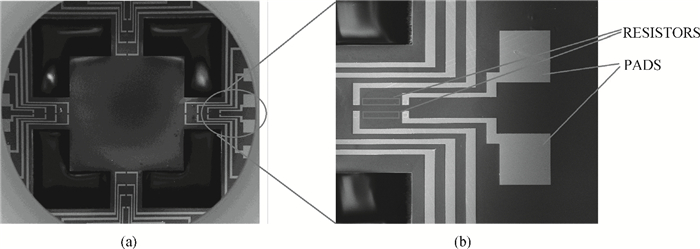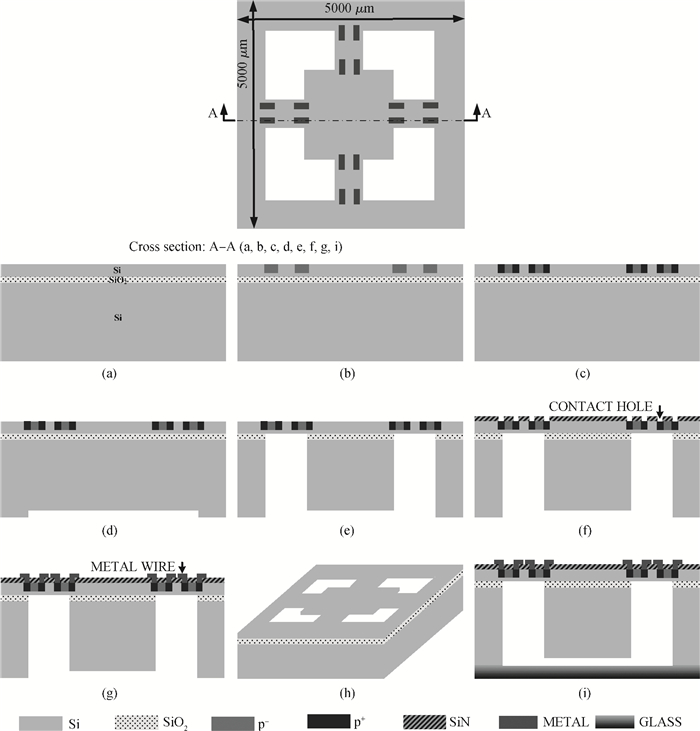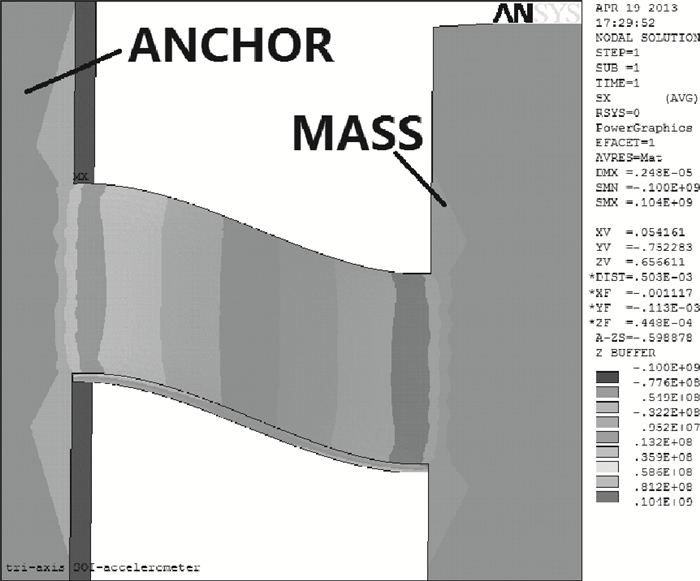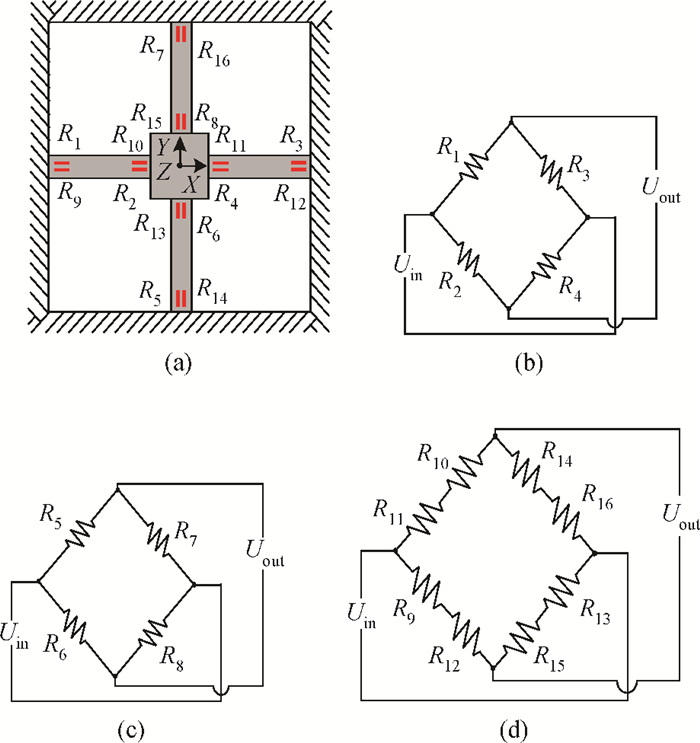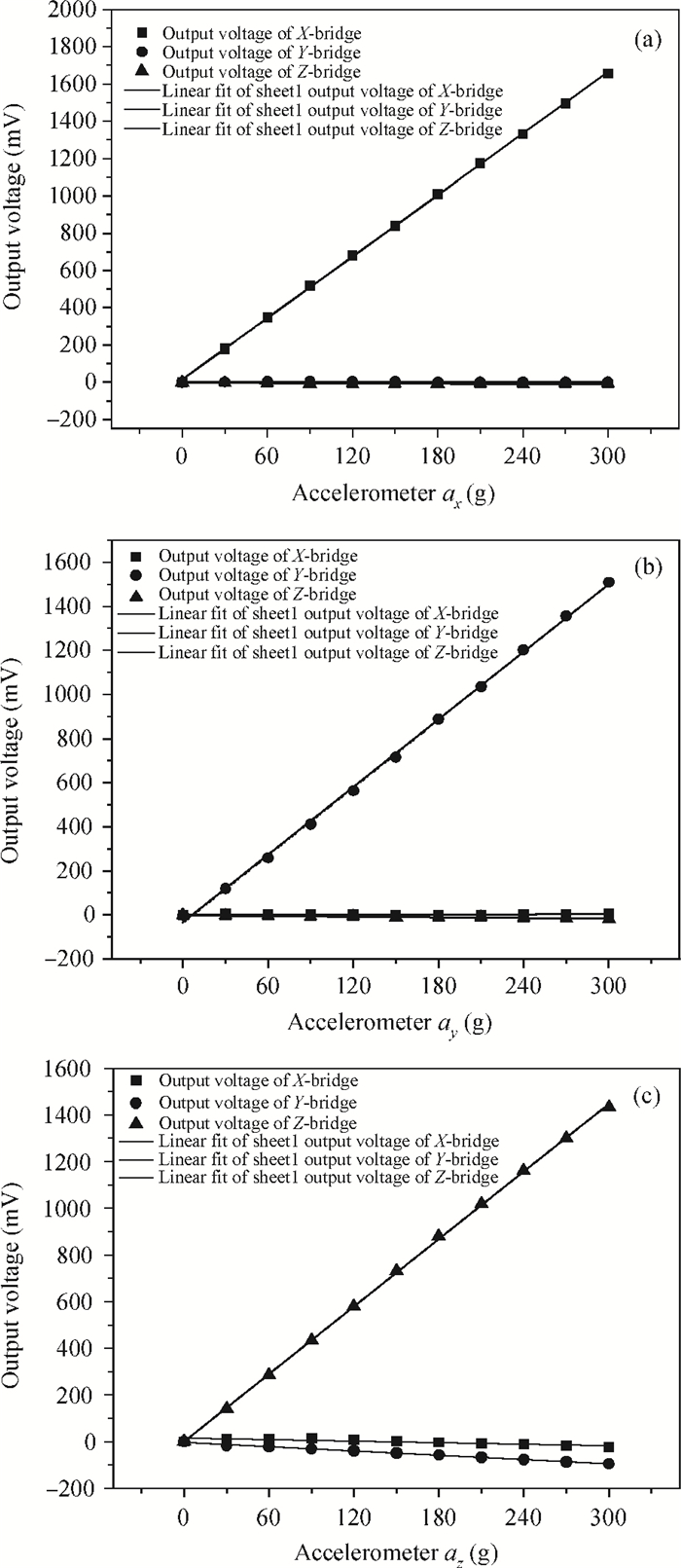| Citation: |
Yongping Zhang, Changde He, Jiaqi Yu, Chunhui Du, Juanting Zhang, Xiujian Chou, Wendong Zhang. An integrated MEMS piezoresistive tri-axis accelerometer[J]. Journal of Semiconductors, 2013, 34(10): 104009. doi: 10.1088/1674-4926/34/10/104009
****
Y P Zhang, C D He, J Q Yu, C H Du, J T Zhang, X J Chou, W D Zhang. An integrated MEMS piezoresistive tri-axis accelerometer[J]. J. Semicond., 2013, 34(10): 104009. doi: 10.1088/1674-4926/34/10/104009.
|
An integrated MEMS piezoresistive tri-axis accelerometer
DOI: 10.1088/1674-4926/34/10/104009
More Information
-
Abstract
An integrated MEMS accelerometer has been designed and fabricated. The device, which is based on the piezoresistive effect, accomplishes the detection of three components of acceleration by using piezoresistors to compose three Wheatstone bridges that are sensitive to the only given orientation. The fabrication of the accelerometer is described, and the theory behind its operation developed. Experimental results on sensitivity, cross-axis-coupling degree, and linearity are presented. The sensitivity of X, Y and Z were 5.49 mV/g, 5.12 mV/g and 4.82 mV/g, respectively; the nonlinearity of X, Y and Z were 0.01%, 0.04% and 0.01%, respectively; the cross-axis-coupling factor of X axis to Y axis and Z axis are 0.119% and 2.26%; the cross-axis-coupling factor of Y axis to X axis and Z axis are 0.157% and 4.12%; the cross-axis-coupling factor of Z axis to X axis and Y axis are 0.511% and 0.938%. The measured performance indexes attain accurate vector-detection in practical applications, and even at a navigation level. In conclusion, the accelerometer is a highly integrated sensor.-
Keywords:
- accelerometer,
- integration,
- piezoresistive,
- tri-axis,
- MEMS
-
References
[1] Yazdi N, Ayazi F, Najafi K. Micromachined inertial sensors. Proc IEEE, 1998, 86(8):1640 doi: 10.1109/5.704269[2] Bao M. Micro mechanical transducers:pressure sensors, accelerometer and gyroscopes. Amsterdam:Elsevier, 2000:281 doi: 10.1002/9783527676330.ch14/summary[3] Wu R, Wen T. Silicon micro-acceleration sensor technologies. Instrument Technique and Sensor, 2007, (3):8 http://en.cnki.com.cn/Article_en/CJFDTotal-YBJS200703003.htm[4] Chen S, Xue C, Zhang W, et al. Fabrication and testing of a silicon-based piezoresistive two-axis accelerometer. Nanotechnology and Precision Engineering, 2008, 6(4):272 http://en.cnki.com.cn/Article_en/CJFDTOTAL-NMJM200804008.htm[5] Dong Peitao, Li Xinxin. Design, fabrication and characterization of high-performance monolithic triaxial piezoresistive high-g accelerometer. Chinese Journal of Semiconductors, 2007, 28(9):1482 doi: 10.1088/1674-4926/33/10/104005/meta[6] Kovacs G T A. Micromachined transducers sourcebook. Translated by Zhang Wendong. Beijing:Science Press, 2003:165(in Chinese)[7] Liu Chang. Foundations of MEMS. Translated by Huang Qing'an. Beijing:China Machine Press, 2007:146(in Chinese) http://ci.nii.ac.jp/ncid/BA77278681[8] Wang Yuemei. Theoretical mechanics. Beijing:China Machine Press, 2004:386[9] Liu Hongwen. Mechanics of materials. Beijing:Higher Education Press, 2004:138[10] Uamada K, Nishihara M, Shimada S. Nonlinearity of the piezoresistance effect of p-type silicon diffused layers. Electron Devices, 1982, 29(1):71 doi: 10.1109/T-ED.1982.20660[11] Wang Zhenyao. Microsystem design and fabrication. Beijing:Tsinghua University Press, 2008:161 doi: 10.1007/s00542-016-2830-6 -
Proportional views






 DownLoad:
DownLoad:
